Meet the graduates.
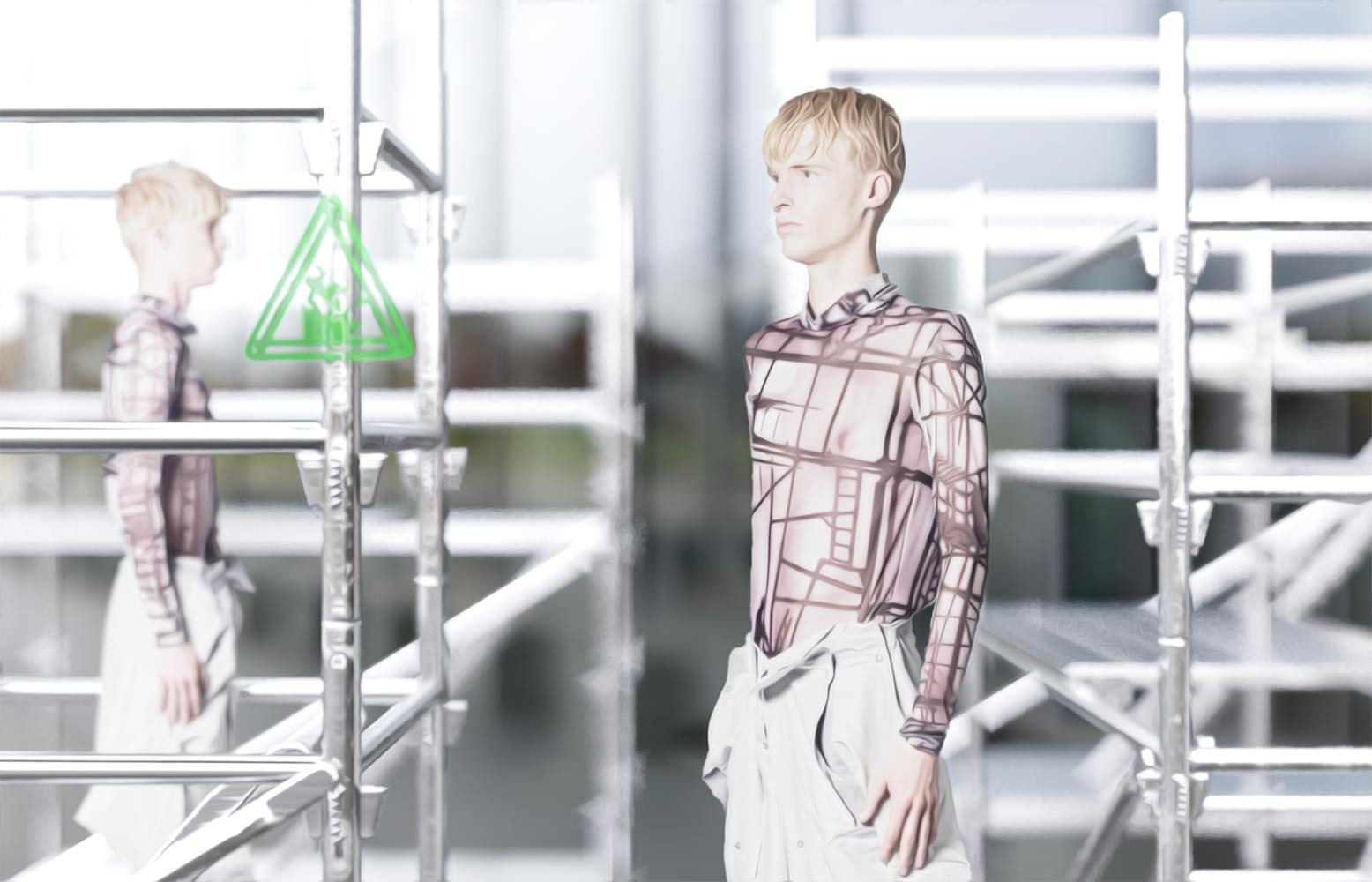
Blood, sweat, tears (and enough coffee for a lifetime), graduation for this year’s fashion students at the Royal Academy of Arts in The Hague has been far from business as usual. Set to complete their collections without models or machines, this group of grads’ have pulled through the spring semester and given us a show to behold. Last Friday, we joined in on the spectacle that was the KABK:Exposed graduate fashion show. We were lucky to be there live, not live-stream, managed to see the collections, as well as squeeze in a few interviews from students as we cornered them by the drinks. It seems there really was a calm amongst the storm, because their creativity shone through even in the chaos of celebration. So here we are – Meet the graduates.
Eva Dimopoulou; Metron Ariston
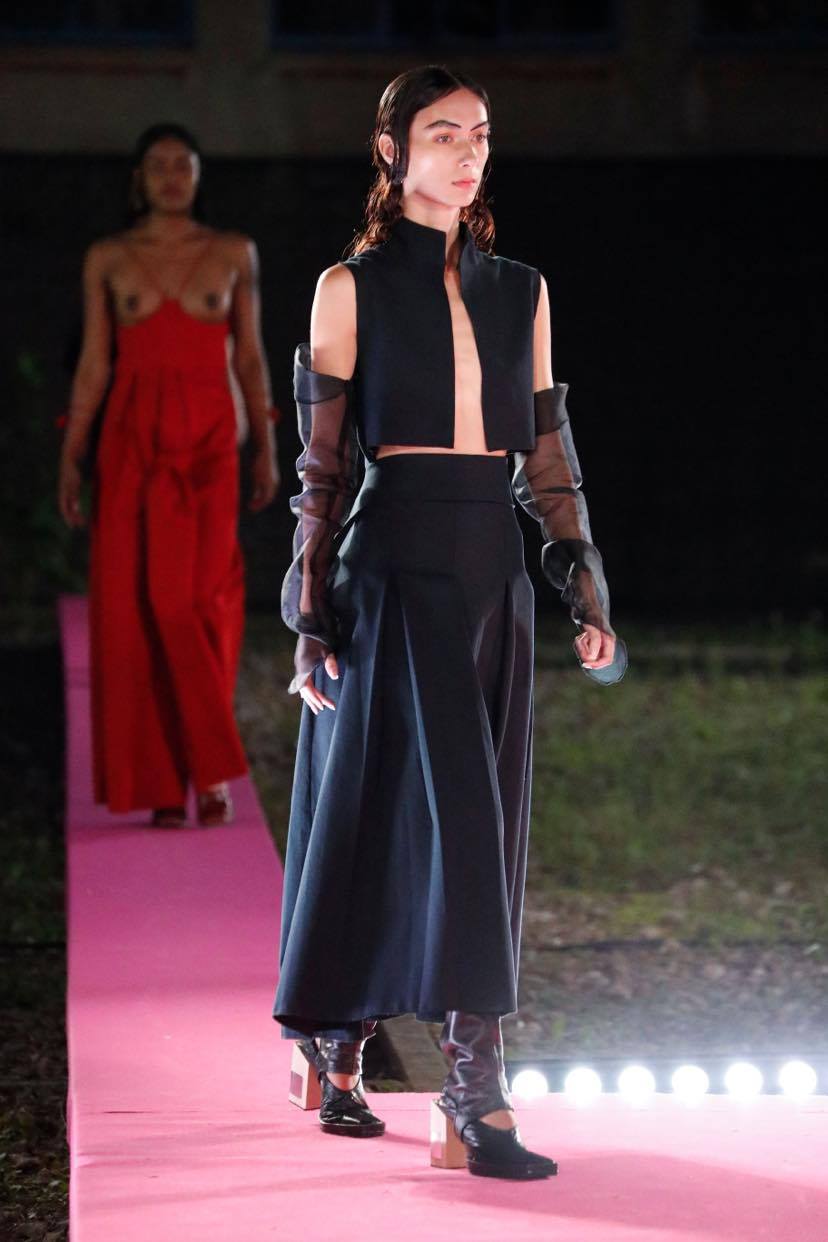
Hey Eva! What was the inspiration for the collection?
The inspiration came from a saying that my father told me six years before I came to the Netherlands: “wherever you go, wherever you are, never forget who you are and where you come from.” So for my last collection, I wanted to really embrace my Greek roots – my nationality and heritage.
I love that. Which aspects of Greekness do you think came across?
Sculpture, poetry, and drama, and all these come together in a minimalist aesthetic for me.
What do you think has been the biggest challenge over the past few years?
The biggest challenge was to be able to find a solution to a problem no matter what happens.
So the challenge is solving challenges?
Yeah, basically! And to learn how to go through a process. because there’s a lot of things going on when you create and it will never quite go as you have it in your mind.
What do you want to do now you have graduated?
I would like some in my village to think and find myself for a month. Then, I am thinking of doing a masters or applying to some brands to gain more knowledge, particularly in wholesale and selling products.
Well, we’ll keep an eye out for what you do. Thanks for talking!
Hailey Kim; Your Own Power
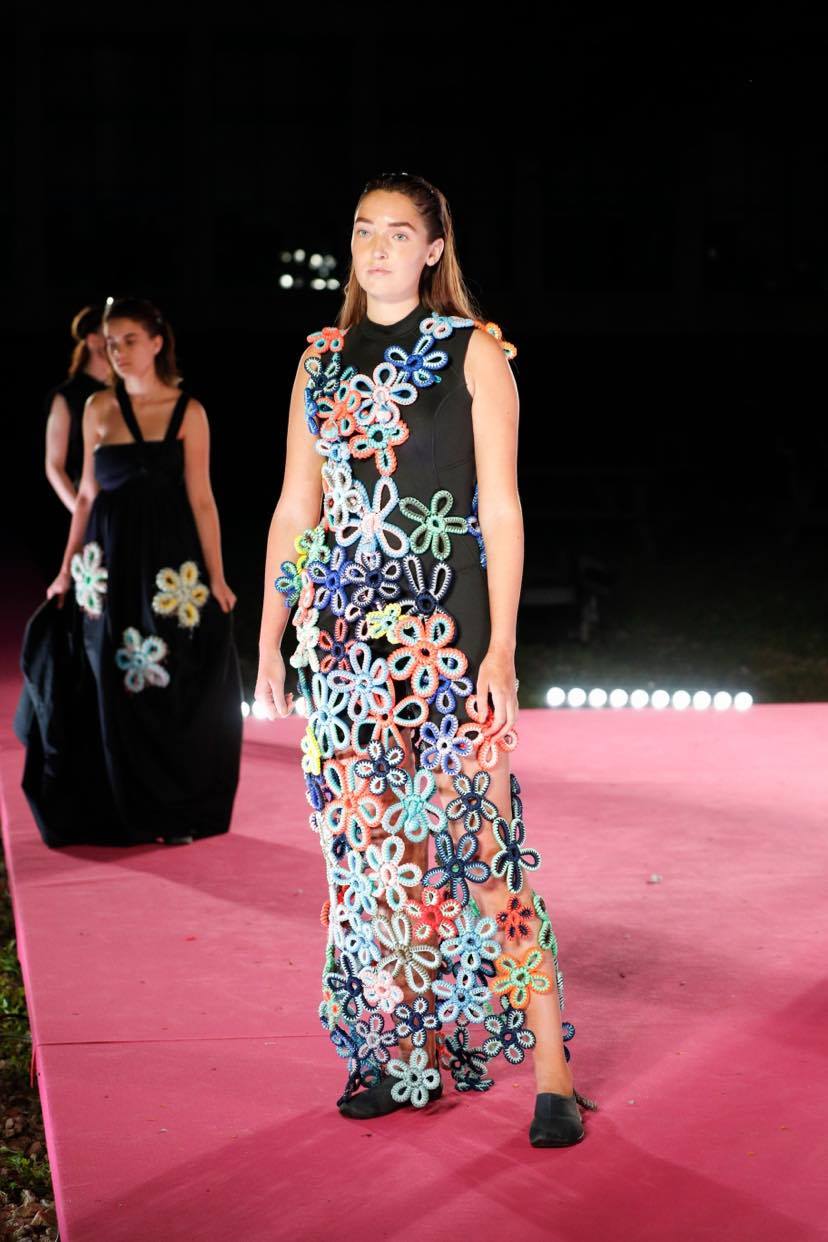
Hey, we LOVED your collection; Ummm the dress with the multi-coloured flowers?!? The details are incredible! It must have taken hours to complete.
Yes!!! 7 months in total. It was a lot of work, but I enjoyed it so much.
Such a labour of love! What was your inspiration for the collection?
The inspiration comes from my grandmother and one of her sisters, which I wanted to combine with an influence from female sea divers in Jeju Island in Korea. The reference from the sea diver’s nets means that the whole collection is based around the same knotting technique in the dresses, trousers and bags. The knotting technique also makes up the flowers on the look 10 dress, as my grandmother loved to wear floral dresses.
We really noticed it come together – with the knotting, the goggles, the shoes and the bodysuits. There’s such a completeness to the collection, which is why it’s so impressive. What was your biggest challenge making this?
My biggest struggle was time management! I didn’t struggle at all with the concept, because I had a really clear idea of what I wanted to do from the beginning. It was just a LOT of hand working. For example, the other flower dress [look 8] was made out of rope which I also made myself. Because I had already done this knotting technique, I didn’t want to just buy the rope from a shop, so I made it myself.
What are your plans for the future now you’ve graduated?
I want to work in the textile industry, and also develop my handcrafting skills further because I think they’re my strong point. Actually I have already made another version of the dress [in look 10] in collaboration with the Korean embassy. This means a floral dress won’t be the final form of that particular piece, but it will be made into a wall piece to display there as well.
Amazing! Thanks so much for talking to us. Good luck for the future.
Hee Eun Kim; We Will Build An Unclear Future
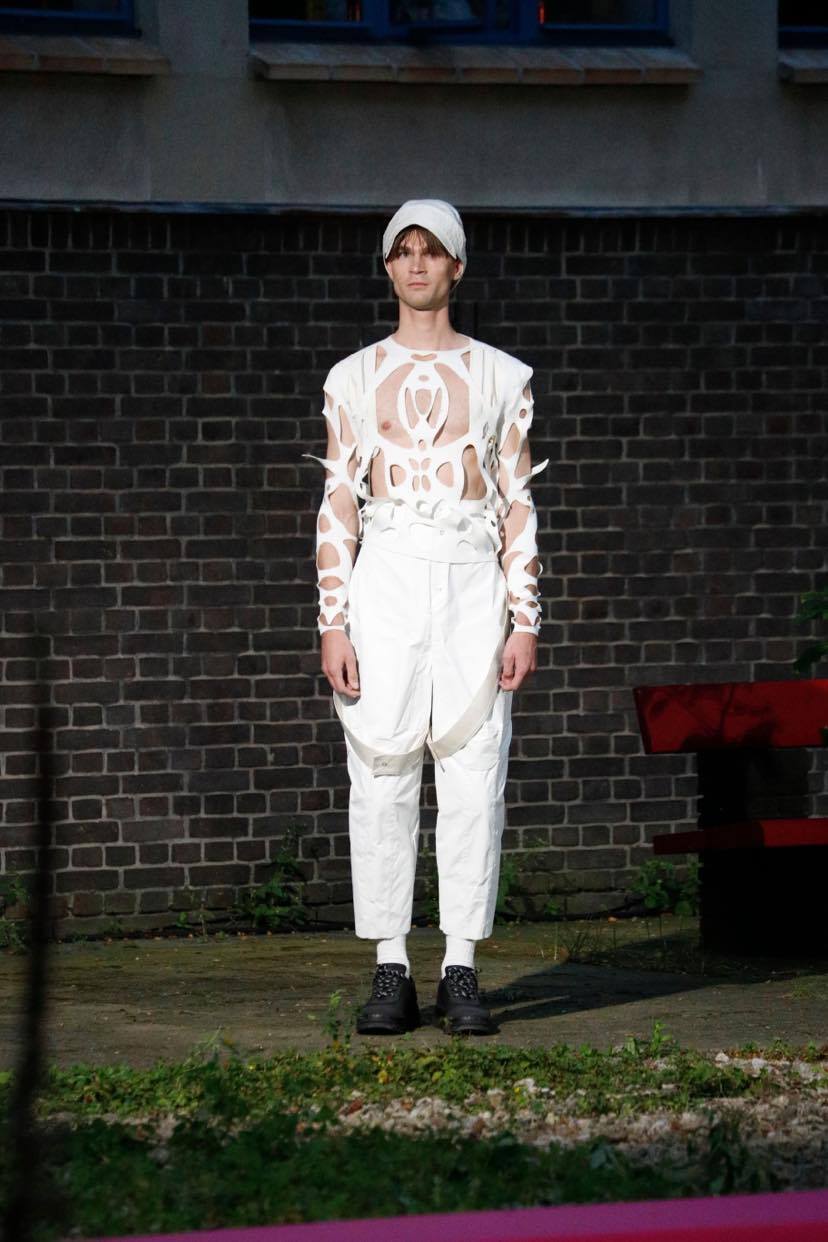
How’s it going? Tell us a bit about yourself…
My friends call me E, because I have three Es in my name. I’m from South Korea.
What was the inspiration for the collection?
I used the idea of graduation and the future as my concept.
I see you’re the only one in your year that chose to do a menswear collection. Could you talk me through the collection?
At first I had this clear idea that I wanted to use white and colour, but then I started using influences from blue-collar workers. That’s why I use construction work as my influence, with the tractor tyre marks and laser cut patterns.
Was it challenging to create this collection in lockdown? It’s been pretty crazy.
Yes! First of all – poor wifi connection. It’s been very hard. The workshops and the machines were out of use which meant I couldn’t experiment using them in the period moving up to the collection. Because the graduate show can really define a student, you just want to make it the best.
What do you want to do next now you have graduated?
I don’t know really! That’s why my title is “Unclear Future”! It’s about my unclear future too. I think the more you expect something, the more you worry about things. So if this [degree] opens up some opportunities and I like them then I’ll just go with it.
Well, we really hope it does for you. Thanks for your time!
Hanakin Henriksson; Ode To The Traces of Life
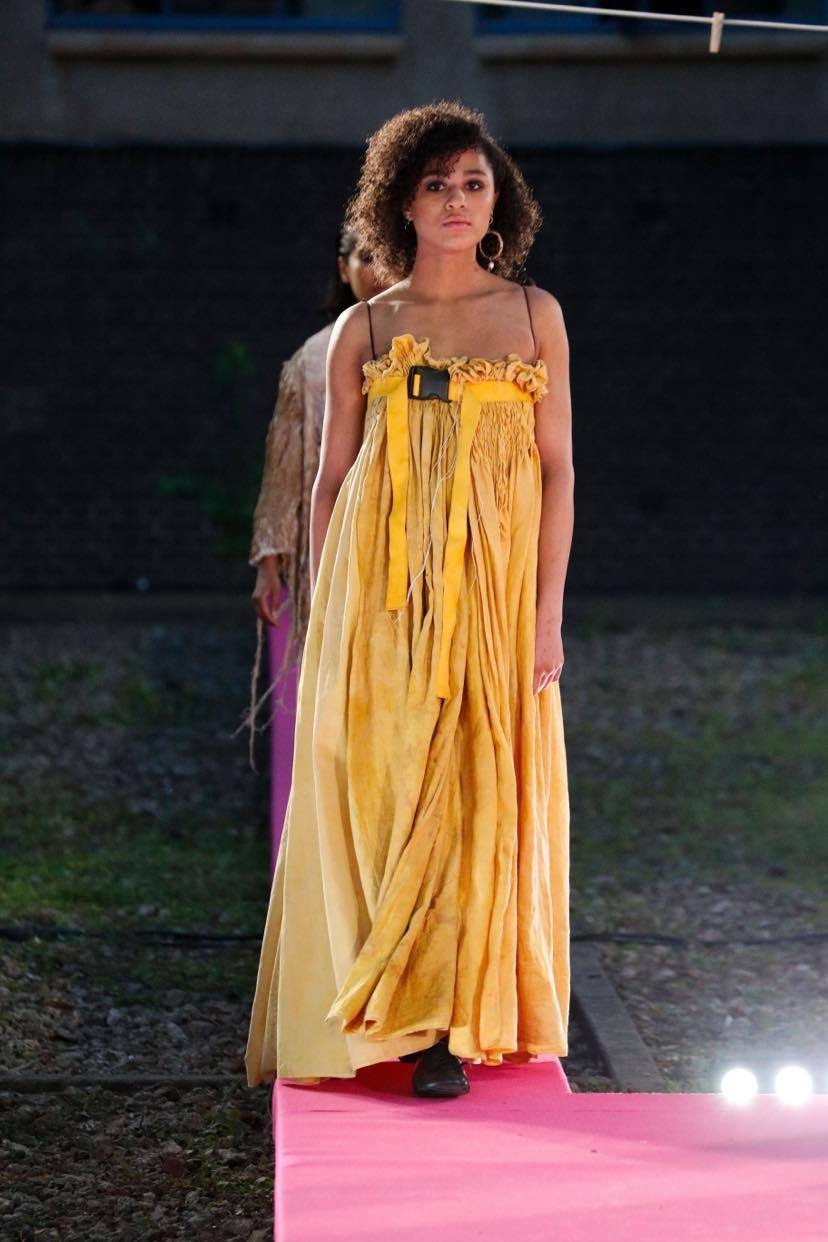
Hi! Tell us a bit about yourself…
Hey – I’m Hanakin Henriksson and I’m originally from Sweden. I’m a jewellery and clothing designer.
What was the inspiration for your graduate project?
My collection is made entirely from vintage linens, sheets, tablecloths and kitchen towels sourced from the Swedish countryside. To me, these garments represent a luxury of the soul, which increase a sense of quotidian pleasure through the beauty of their history – the fading prints and smell from the past are like incarnate memories, proofs of experience.
And were there any particular designers that inspired you for the collection?
[Issey] Miyake is my favourite designer for sure, but if I could wear anything it would be Uma Wang. For my collection, I looked mostly at old workwear or garments from my own wardrobe that I find especially comfortable or well made.
What kind of community/audience do you think your work speaks to?
I think my audience is old, either on the inside or outside since you need to have a fascination with history to feel connected to my collection.
What has been the biggest milestone, and the biggest reward, over the past four years?
The biggest test of these four years is to have realised I was right all along, haha.
What are you looking at doing next now you have graduated?
Now I’ve graduated I have started a company and I’m making antique-inspired jewellery. I will start making clothes again but for now I’m taking a break from textile for a few months.
Inge Vaandering; Sticky Fingers
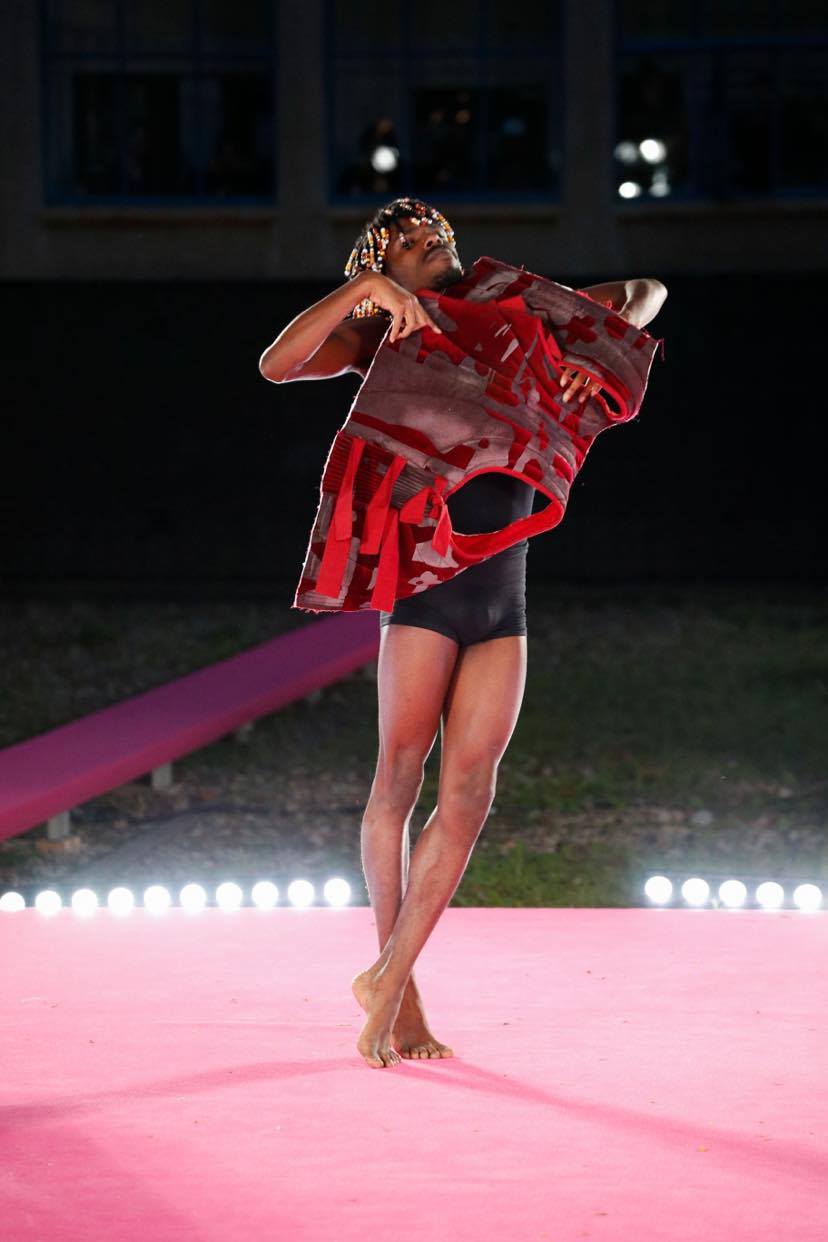
Tell us a bit about yourself – name, age, where you’re from etc.
I’m Inge Vaandering, I originally came from Schiedam and then I studied product design in Arnhem for 1,5 years before I came to do this fashion bachelor in The Hague.
What was the inspiration for your graduate project?
I’m interested in how [other] senses can reduce the dominant role of eyesight which is why I create textiles that are very tactile for both the body and the eyes. My goal is to create a bodily experience and to find the tension between garments, objects, and people which leads to a more imaginative and conscious perception of feelings and surroundings.
And which artists or designers have influenced your project?
Both Juhani Pallasmaa, an architect who wrote the essay The Eyes of The Skin and painter Pyke Koch, are a big source of knowledge and inspiration for me.
Did you find it challenging creating this project during the lockdown period? How did your creative process change over this time?
When lockdown started, it was very soothing to be alone in my studio and to not have too many options for places to work or sourcing fabrics. Although I often lacked the motivation to work, I noticed during this period I got to know myself better. After a while these restrictions actually improved the choices I was making!
What kind of community/audience do you think your work speaks to?
Because of its tactility, I wouldn’t place my work only in fashion, but in performance-work or another context. The audience has to be open for this themselves, but I also want them to become more conscious of what they’re experiencing.
What are you looking at doing next now you have graduated?
Since I won quite an amount of money [from the Keep an Eye award] intended for educational practices, I would like to learn more and specialize within the concept of ‘our senses’. As a start, together with Laura Snijders, I will join this year’s Fashionclash with some new work which will be all about tactility. I am excited for what is to come!
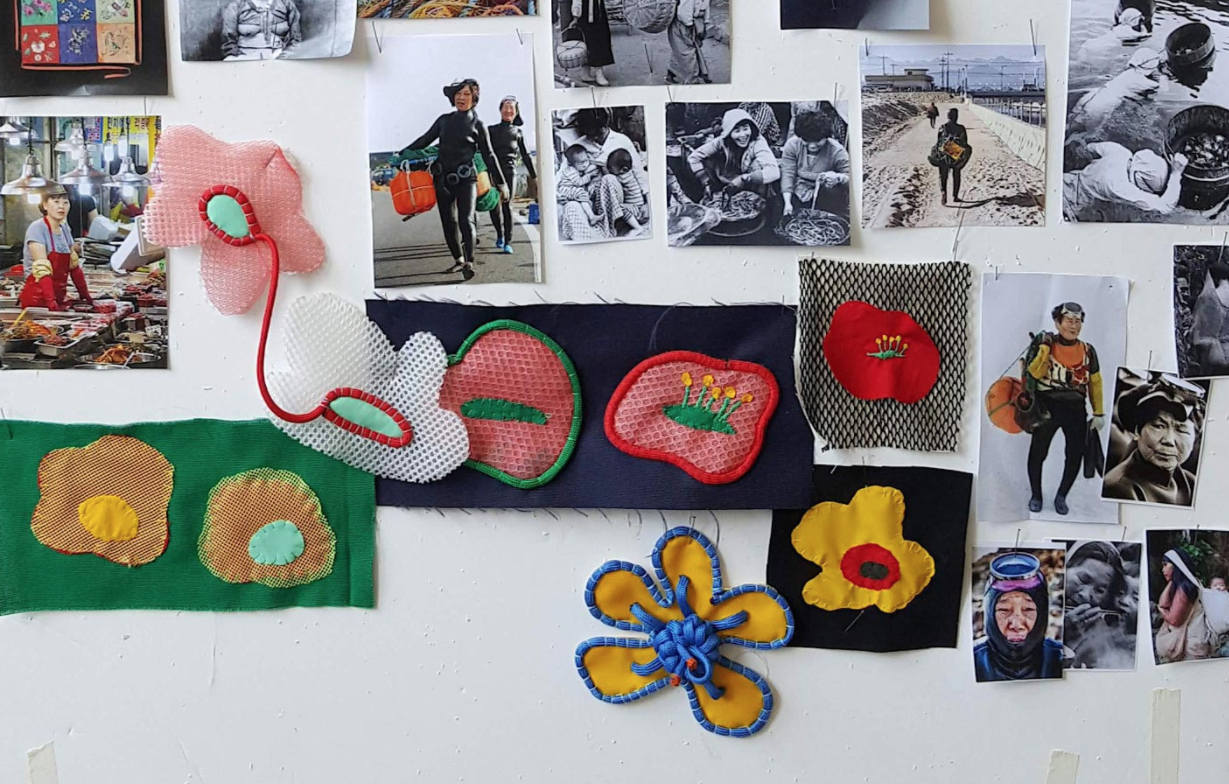
Photography by Team Peter Stigter
Words by Rose Holmshaw
Notifications